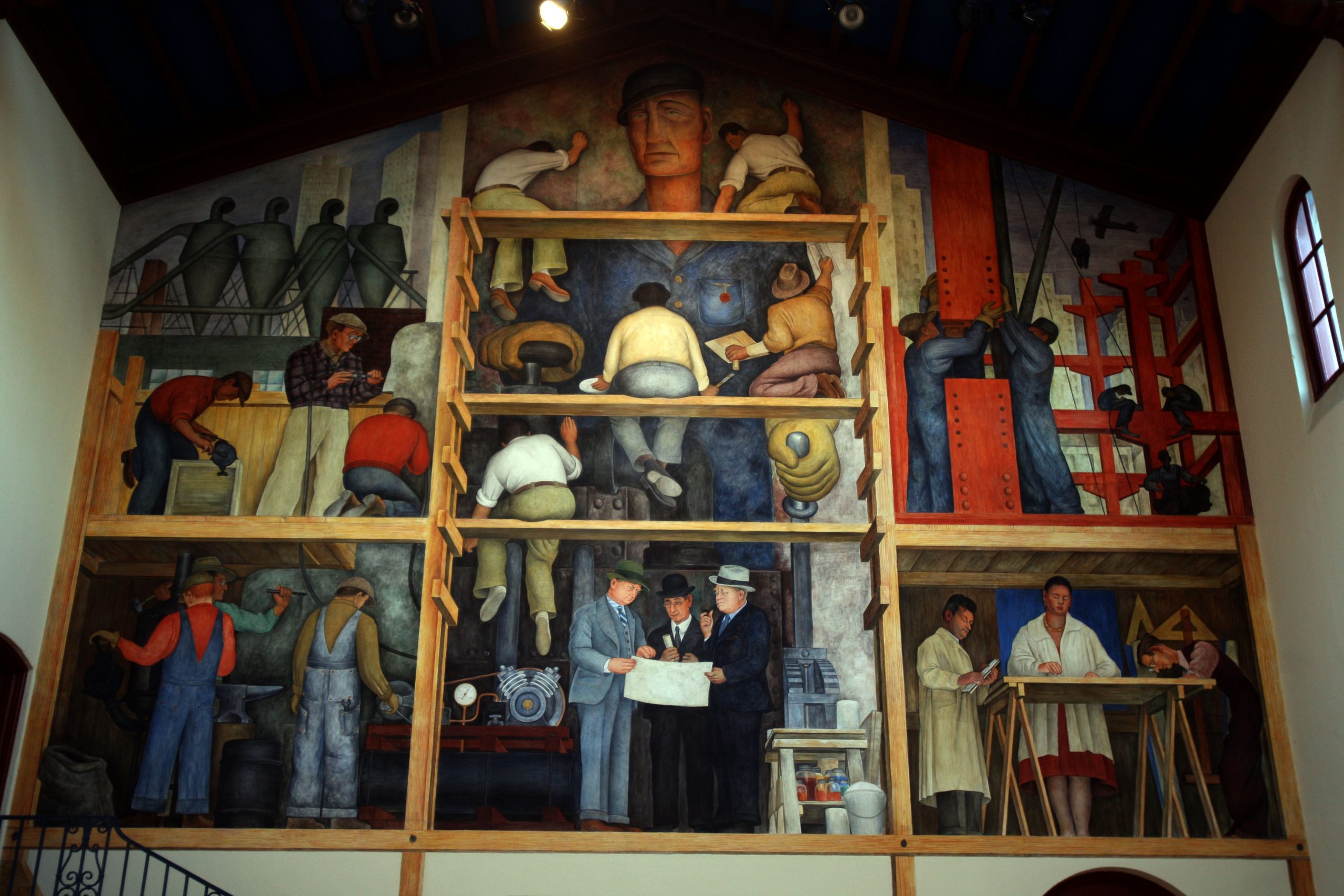
A group of investors led by philanthropist Laurene Powell Jobs, the wife of late Apple CEO Steve Jobs, has purchased the former site of the historic San Francisco Art Institute (SFAI) with the hopes of restoring it as a nonprofit arts institute.
The sale was made public in court documents filed to the U.S. Bankruptcy Court for the Northern District of California on March 1. The documents obtained by Artnet News list BMAI LLC as the buyer, with a price of $22.5 million for the property and $7.5 million for a prized mural by Diego Rivera located at the site—for a total price just shy of $30 million. The deal will see the work remain on-site, on the ground floor of the campus, according to the San Francisco Chronicle.
The future of the mural had been in question until the deal, first revealed by the Chronicle, was reached. The mural was previously valued in bankruptcy filings at $50 million and considered the most valuable asset owned by the SFAI. In 2021, in a bid to rescue its flagging finances, the school considered selling the work, potentially to George Lucas for his forthcoming museum in L.A., but faced pushback from its faculty and alumni, including artist Catherine Opie.
Failed efforts to revive the SFAI’s finances saw the 150-year-old institute shut its doors in 2022 and declare bankruptcy the following year. In September 2023, Artnet News’s Eileen Kinsella revealed that the Jobs-led group of investors had made an offer to buy the institute.
San Francisco Art Institute. Courtesy of Getty Images.
The San Francisco Art Institute, built in 1926 in a colonial revival style by the architects Bakewell & Brown, was declared a historic landmark in 1977. In its century-plus run, the school boasted a well-regarded faculty and alumni, including Ansel Adams, Joan Brown, Annie Leibovitz, and Kehinde Wiley
But the 93,000-square-foot campus will need significant repairs. A damaged red clay-tiled roof has left much of the campus with standing water. Students who had to pack up and leave when the institute closed left behind much of their personal items and old supplies.
Court documents show that the trustees of the former San Francisco Art Institute have now received authorization to pay $160,000 to a third-party vendor to dispose of personal property left behind at the site.
Jobs’s connection to BMAI was revealed by the San Francisco Chronicle, which reported that the team revitalizing the site also includes the heads of other renowned arts organizations in the city. They are Stanlee Gatti, the former president of the San Francisco Arts Commission; Stephen Beal, former president of the California College of the Arts; Brenda Way, the founder of the ODC dance studio; David Stull, president of the San Francisco Conservatory of Music; and Lynn Feintech, president of the Los Angeles-based Liberty Building Co. and a longtime ODC board member.
“We’re energized by the tremendous community support we’ve seen for restoring the site, keeping the mural in place, and reopening as a nonprofit arts institution that will bring in a dynamic new generation of artists,” Way said in a statement to the Chronicle. “We’re building on a brilliant cultural history and looking toward a boundless artistic future, one that will affect and be affected by the vibrant culture of San Francisco. Now, the real work begins.”